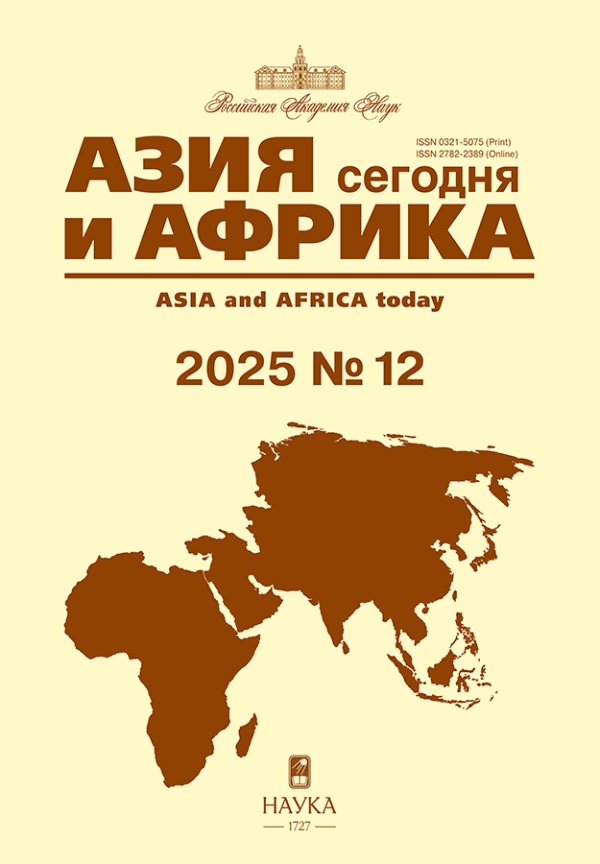Automation of the Manufacturing Industry in China: Prospects and Risks
- Authors: Lemutov V.A1
-
Affiliations:
- Institute of Asian and African Studies, Lomonosov Moscow State University
- Issue: No 6 (2024)
- Pages: 70-78
- Section: Post-graduate tribune
- URL: https://journals.rcsi.science/0321-5075/article/view/258976
- DOI: https://doi.org/10.31857/S032150750031025-9
- ID: 258976
Cite item
Full Text
Abstract
Keywords
About the authors
V. A Lemutov
Institute of Asian and African Studies, Lomonosov Moscow State University
Email: vlemutov@gmail.com
ORCID iD: 0000-0002-8856-9925
Applicant, International Economic Relations Department Moscow, Russia
References
- China’s Domestic Transformation in a Global Context (China Update Series). Song L., Garnaut R., Fang C., Johnston L. et al. Canberra: ANU Press, 2015.
- Мельянцев В.А. Успехи, проблемы и противоречия современного экономического роста в развитых и развивающихся странах. Восток (Oriens). 2015. № 5. С. 80–102. Meliantsev V.A. 2015. Successes, problems and contradictions of modern economic growth in developed and developing countries. Vostok (Oriens). № 5. Pp. 80–102. (In Russ.)
- Cheng H., Jia R., Li D., Li H. 2019. The Rise of Robots in China. Journal of Economic Perspectives, № 33 (2), Pp. 71–88.
- Müller C. 2023. World Robotics 2023 – Industrial Robots. IFR Statistical Department, VDMA Services GmbH. Frankfurt am Main, Germany.
- Dang Y. China eyes robot manufacturing as way to fuel economic growth. South China Morning Post. https://www.scmp.com/news/china/politics/article/3231715/china-eyes-robot-manufacturing-way-fuel-economicgrowth (accessed 12.01.2024)
- Acemoglu D., Restrepo P. 2020. Robots and Jobs: Evidence from US Labor Markets. Journal of Political Economy. Vol. 128. № 6. Pp. 2188–2244.
- Autor D.H. 2015. Why Are There Still So Many Jobs? The History and Future of Workplace Automation. Journal of Economic Perspectives. 2015. Vol. 29. № 3. Pp. 3–30.
- Manyika J. et al. A Future That Works: Automation, Employment, And Productivity. McKinsey & Company. 2017. https://www.mckinsey.com/~/media/mckinsey/featured%20insights/Digital%20Disruption/Harnessing%20automation%20for%20a%20future%20that%20works/MGI-A-future-that-works-Executive-summary.ashx (accessed 14.01.2024)
- Lambert J., Cone E. How Robots Change the World. Oxford Economics. 2019. https://www.oxfordeconomics.com/resource/how-robots-change-the-world/ (accessed 14.01.2024)
- Acemoglu D. 2000. Technical Change, Inequality, and The Labor Market. National Bureau of Economic Research. Working Paper No. 7800.
- Kirton D. Insight: Younger Chinese are spurning factory jobs that power the economy. Reuters. 2022. https://reuters.com/world/china/younger-chinese-are-spurning-factory-jobs-that-power-economy-2022-11-21/ (accessed 15.01.2024)
- Chen X., Pei G., Song Z., Zilibotti F. 2023. Tertiarization Like China. Annual Review of Economics. № 15. Pp. 485–512. https://doi.org/10.1146/annurev-economics-071122-030026
- Lin X. Almost 20% of China’s Workforce Is in Manufacturing, Study Shows. Yicai Global. 2022. https://www.yicaiglobal.com/news/almost-20-of-china-workforce-is-in-manufacturing-study-shows (accessed 15.01. 2024)
- Акимов А.В. Влияние робототехники и трудосберегающих технологий на демографические процессы: тренды и сценарии. Демографическое обозрение. 2017. Т. 4. № 2. С. 92–108. Akimov A.V. 2017. How robotics and labor-saving technologies impact population change: trends and scenarios. Demographic review. Vol. 4. № 2. Pp. 92–108. Moscow. (In Russ.)
- Moravec H. 1988. Mind Children: The Future of Robot and Human Intelligence. Cambridge, Massachusets. 214 pp.
- Sheehan M. China’s AI Regulations and How They Get Made. Carnegie Endowment for International Peace. 2023. https://carnegieendowment.org/2023/07/10/china-s-ai-regulations-and-how-they-get-made-pub-90117 (accessed 23.01.2024)
Supplementary files











